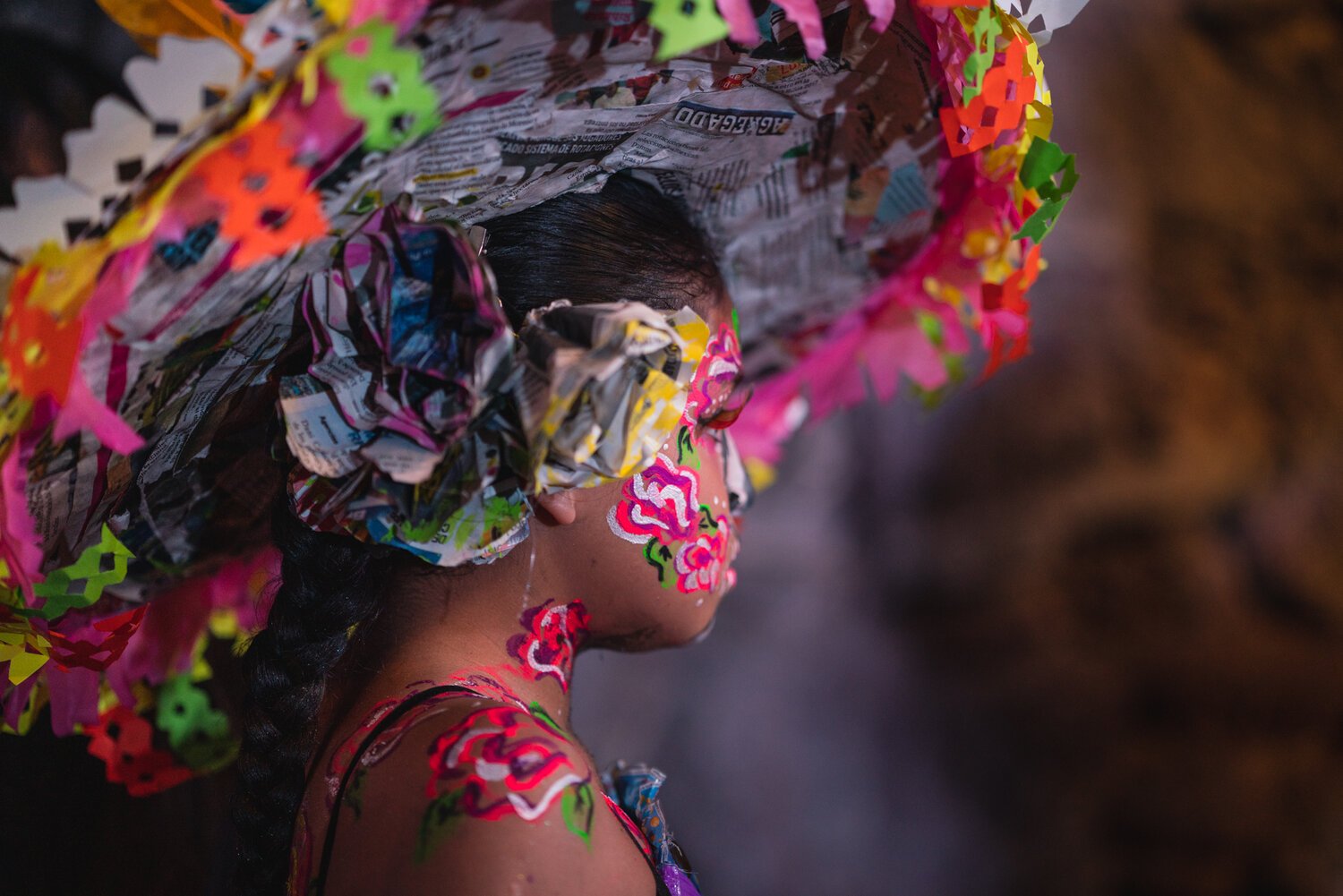Dia De Los Muertos 2019: Before the Pandemic Changed the World
Photos & Words by Tara Kerzhner
When I decided to travel down to central Mexico to observe Día de Muertos, I knew little more about the cultural significance of this event than what I’d seen in popular media - A holiday marked by colorful Ofrendas and marigolds used to celebrate the dead.
As a non-religious adult, most american holidays riddle me with anxiety. Formative childhood experiences, like hand painting blood onto a - miniature crown of thorns - seem to have taken a toll. And while the biblical significance of the easter bunny wasn’t enough, there was of course Thanksgiving.
I grew up embracing only white, Christian culture. My dad was adopted and my mom is white. Growing up, I felt white, except when I didn’t - my Nez Perce heritage made for an ambiguously brown skin tone which others often reminded me of.
You can imagine my indignation when in elementary school, I was cast as The Indian in our class Thanksgiving presentation. My teacher proudly proclaimed I’d wear what looked like a brown burlap sack, while the other girls wore pink paper bonnets. I represented a caricature of my heritage that I knew nothing about.
The decision to visit Mexico and observe Día de Muertos felt emotionally vacant. It wasn’t until I was down there in 2019, that I began to quietly understand how special this celebration truly was. I felt feelings, without really knowing what they were. I took photographs on the streets, spoke to locals in my broken spanish and connected with indigenous locals over beadwork - an art that my Great Grandmother, a Nez Perce elder, was well known for.
As an adult I’ve struggled with where Christianity fell short. Spirituality feels ultimately tied to my past. However learning about the ceremonies within indigenous culture could represent my future.
The celebration of Día de los Muertos originated within multiple nahuatl-speaking indigenous peoples within central mexico. Spanish colonization in the 1500s forced this celebration to combine with Catholic traditions, coinciding with the Western Chistian triduum of Allhallowtide: All Saints’ Eve. These holidays led to the origin of Halloween, however, let me be clear - this is not Halloween. Prior to colonization Día de Muertos lasted an entire month and coincided with the ninth month of the Aztec calendar. Today it is celebrated on a national scale within Mexico, despite early objections from the church that it glorified “pagan” traditions.
As a Native American woman, it felt almost shocking to experience this indigenous holiday observed on a national level in 2019. Full of heart, cultural ceremony, family and a fearless celebration of death. My hope is to show what moved me so deeply in the streets of Guanajuato and Guadalajara through my photographs.







